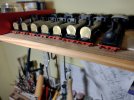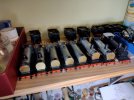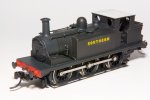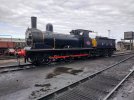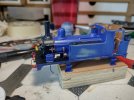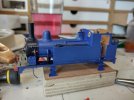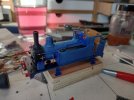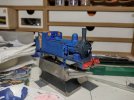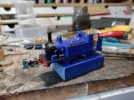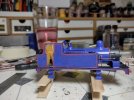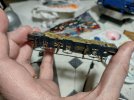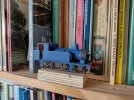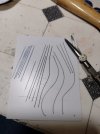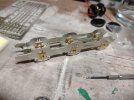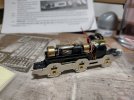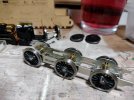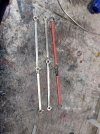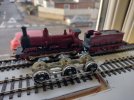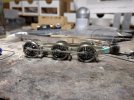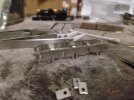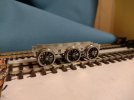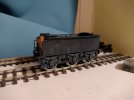A black art?
So following on from my previous experiments with painting locomotives as I said earlier I had a small epiffany.
Now as well as making model railways amongst other things I paint wargames miniatures
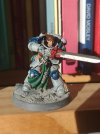
Nothing to do with the trainset but here is one example a champion from my space marines chapter
My epiffany was simple.... Instead of using techniques and mediums you are not comfortable using why not use something you are much more at home doing? So I endeavoured to try applying the techniques I use for my Warhammer miniatures to a locomotive
The hardest colour to get any kind of contrast on is black. And that is because you can only highlight it is impossible to shade. So obviously I was sensible and started with the hardest option: a plain black goods loco.
Those who know me might be aware that I have a slight soft spot for the GER Y14 (J15 if you speaky LNER speak) and I've acquired one or two models from the Hornby stable during my OO gauge years. These I have been slowly backdating and regauging to the GER period and EM gauge respectively.
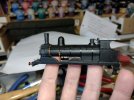
So this was the guinea pig for this experiment #510 built in 1899 by the GER and currently painted plain black using car areosol.
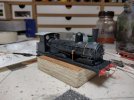
To start with I had a go at breaking up the block colour by a layer wash of an off black.
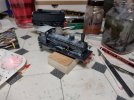
Next I added so over exaggerated highlights bly drybrushing first a medium grey and then a very light great in a streaking pattern top down
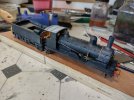
This was calmed down by a black filter coat which softened the highlights and brought it all together.
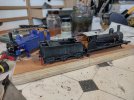
The footplate and smokebox were then drybushex heaving with a slate grey just to lift them in contrast to the body colour.
There's still some things to do, and details to touch in not to mention the brassmasters easichas to fit but I really love the effect. I appreciate it might not be everyone's cup of tea but I like it.
The next challenge is how to apply the same technique to a blue engine? Oh and then how to line it....
Happy modelling!







